No Man's Sky guide: tips for getting started
Take to the sky and make it yours with a few helpful hints.
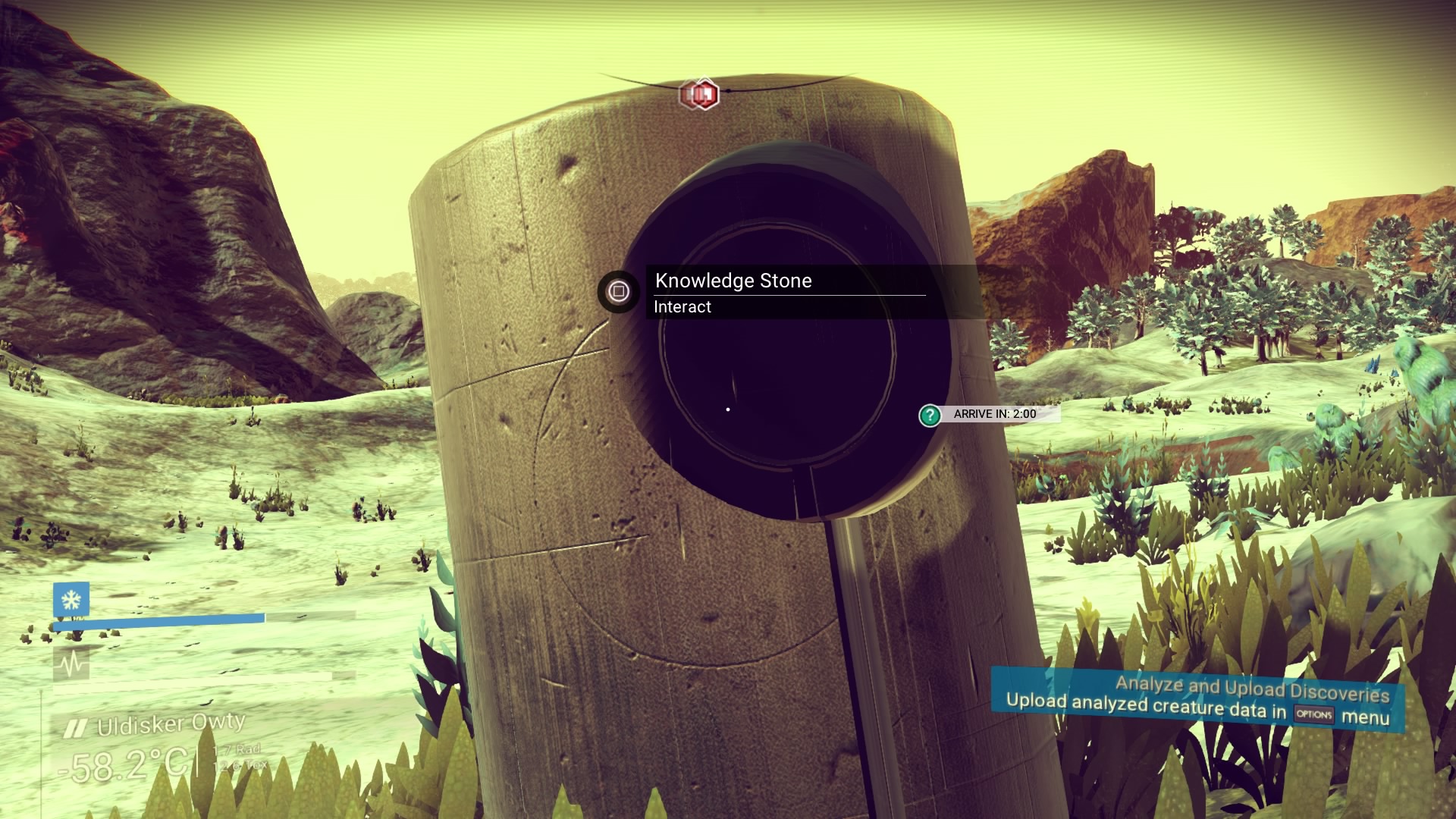
Looking for advanced tips? Read our guide for making money in No Man's Sky.
No Man’s Sky is out now on PC, but we've already had some experience playing it on PS4. Our review will be based on the PC version, but while we work on that, here's a quick guide to getting started in the game based on what we've learned so far.
A lot of tips we could give for the early game are pretty obvious: Hey, you have a jetpack! Upgrade your stuff when you can! Explore, because that’s how you find things! Of course you’re going to do all that, but a few little things aren’t brilliantly explained and you can shave a bit of time off the initial learning process if you know what to expect. We'll keep this guide updated as we learn more.
Repairing your ship
Your first task is simple: wander around collecting resources to repair and fuel your ship. You should be able to find everything you need without going too far. Iron is plentiful, and plutonium is found in pointy red crystals—scan the surrounding area and look for energy symbols. (You might find a big cache in a cave.) The trickiest thing to find at first is thamium9, which comes in little bulbous red plants. Once your ship is repaired, you can find tons of it out in space by blowing up asteroids, so don’t bother hunting for plants after that.
Little tool tips in the bottom right will give you guidance. Check out your inventories and note that a couple of modules in your multi-tool are broken—you just need iron and carbon to fix them, so do that first. Your scanner will help you find the rest of what you need.
Side note: You can claim the pre-order ship anytime and it will replace the regular starting ship, but I don't recommend doing it right away. It lets you leave the starting system immediately instead of learning how to build a hyperdrive yourself—which is nice, but you'll skip some steps that show you the ropes and involve the story. And if you don't get the hyperdrive blueprint, you could be in a bit of trouble later on. I recommend claiming the ship once you've left the first system.
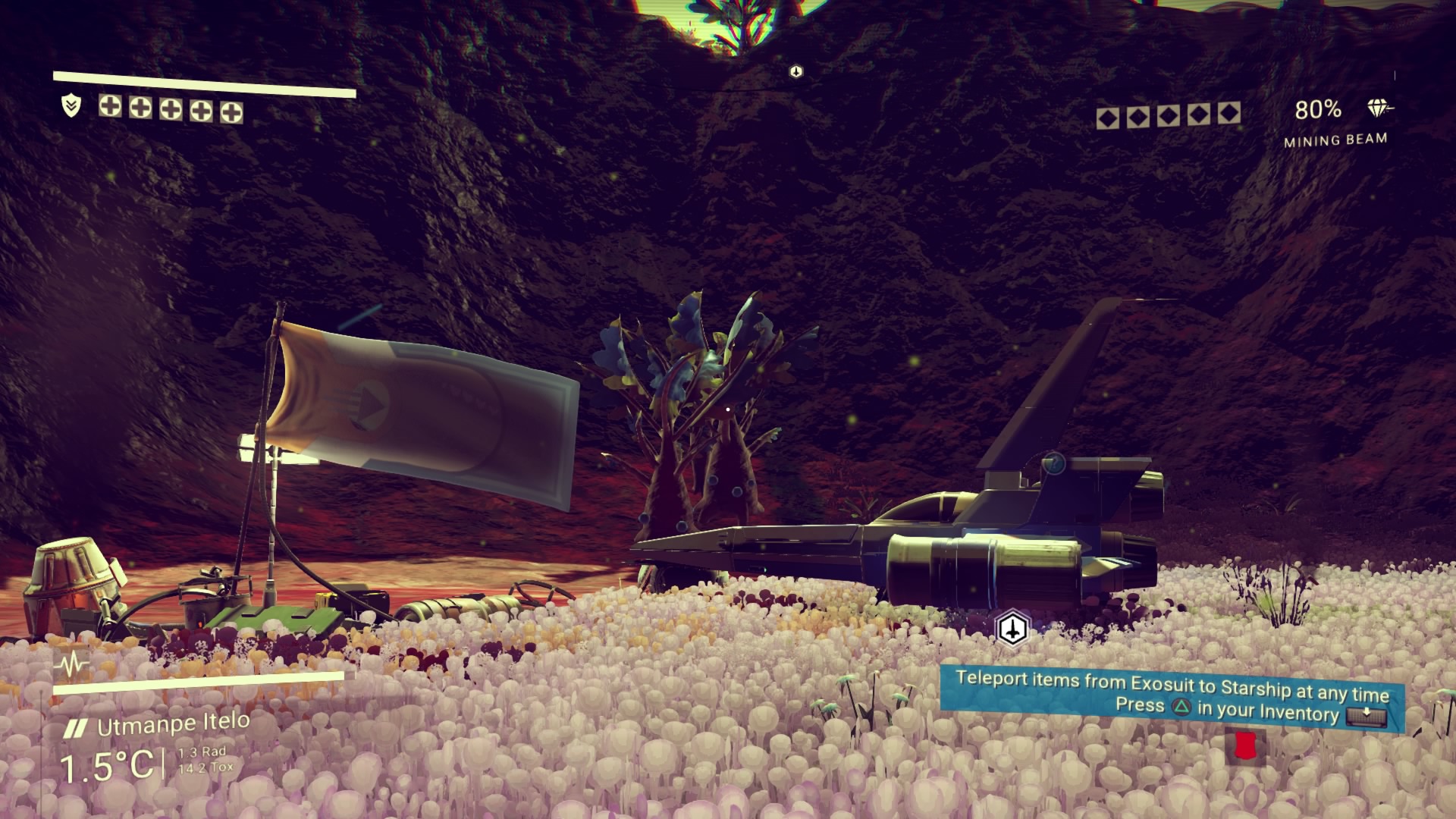
Identifying resources
There are a few main types of resources, and you’ll need a little of all of them to get going. Each resource type has an icon, and it’ll save you time to learn them early.
Keep up to date with the most important stories and the best deals, as picked by the PC Gamer team.
Red lightning bolt: Isotopes. These are used to power things, such as your life support unit and take off thrusters. You can use carbon for life support in a pinch, but since sentinels can get mad at you for disturbing plants, it’s better to stock up on plutonium. Recall that thamium9 comes in red plants, but is easier found in asteroids.
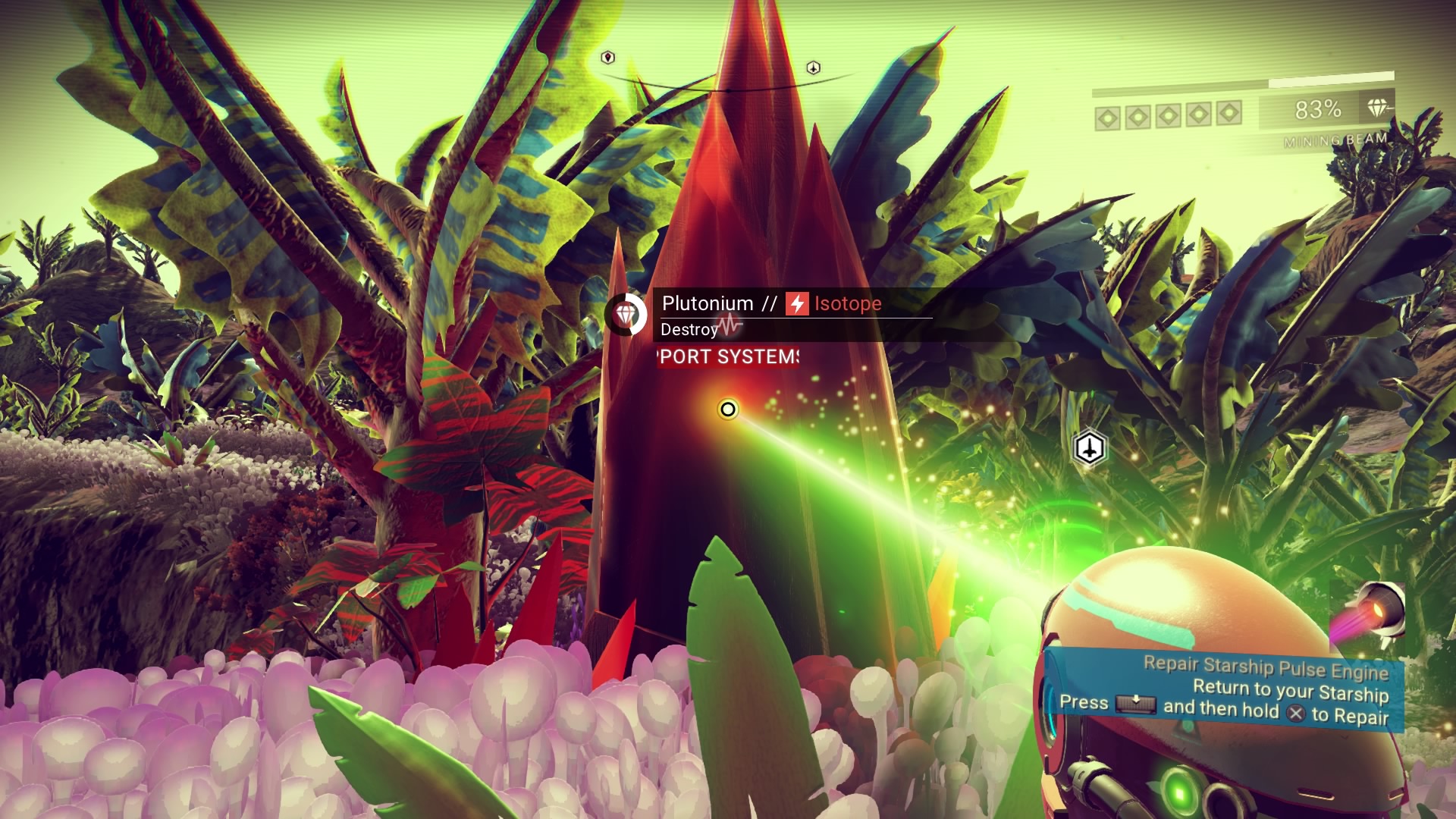
Yellow brick: Oxides. The two to look out for are zinc (yellow flowers) and titanium (crystals) which are used to charge defensive units like your hazard protection system and your ship’s shields. Iron is also an oxide, and is used for crafting.
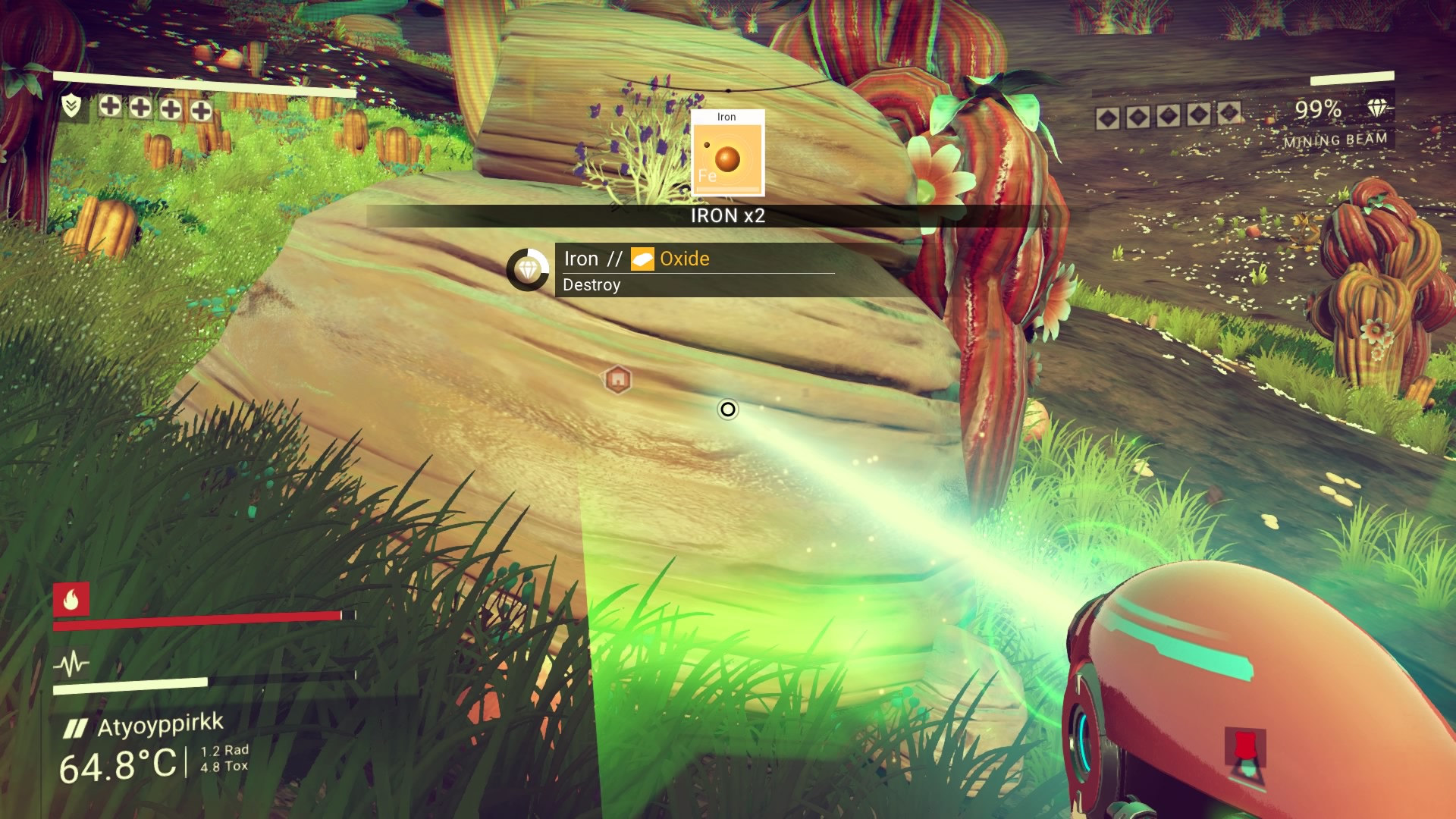
Blue flask: Silicates. You’ll need these for crafting. You’ll most commonly find platinum, but you’re going to need some heridium to keep your FTL travels going. There’s some potential confusion here: platinum is gathered from plants while heridium comes in big monolithic hunks. When you scan, your visor will highlight such a chunk of heridium with 3D cubes to indicate you can mine it.
There are other resources out there, such as the neutral gold and aluminium, but those listed above are the most important, at least at first.

Dealing with hostiles
Don’t worry too much about the sentinel drones hovering around: except on planets where they’re outright hostile, if you don’t shoot them, they mostly won’t shoot you. They may get touchy if you start destroying plants or messing with wildlife, though. If you do get into a scrap, either try to take them all out or run away. As far as I can tell, once an area is cleared of sentinels it remains safe to explore, at least for a while. Later on you can always retreat to your ship (once it’s fixed) and fly to a different part of the planet if needed—that’s what I do, because I’m too lazy to shoot them down most of the time.
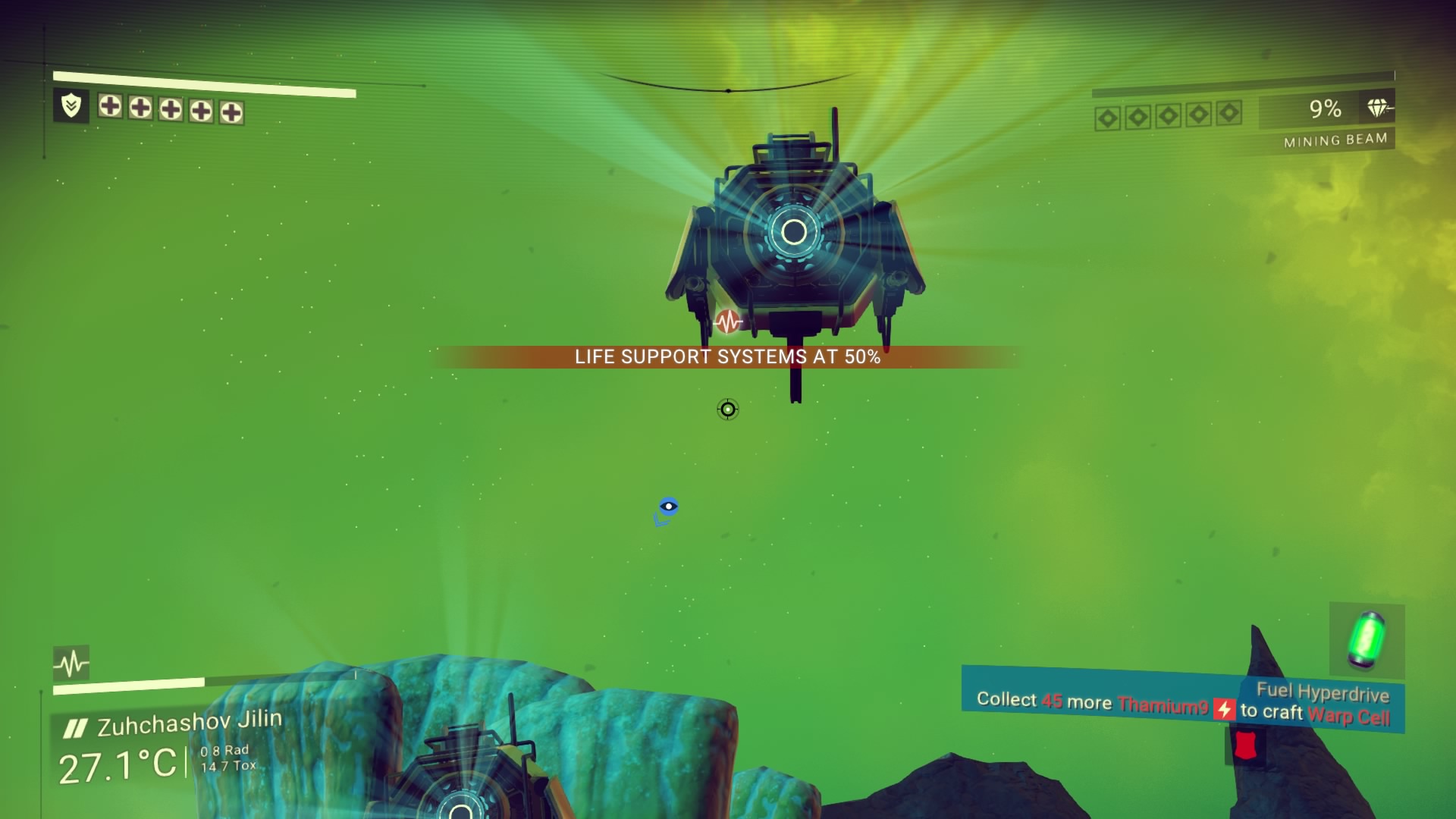
Maintaining life support
Not dying is pretty easy. You have two systems to maintain: life support and hazard protection (if on a hazardous planet, eg with radiation or extreme heat). Your life support system can be powered by any isotope, including carbon, which is easy to find—just mine plants and hope the sentinels aren’t bothered. Your hazard protection system can be recharged with zinc. Just pick it up as you go and keep a stash with you in case you end up on a radioactive planet later. If you’re ever in trouble, hopping back into your ship or a powered outpost resets your radiation exposure or temperature, so you’re never really in danger unless you wander too far.
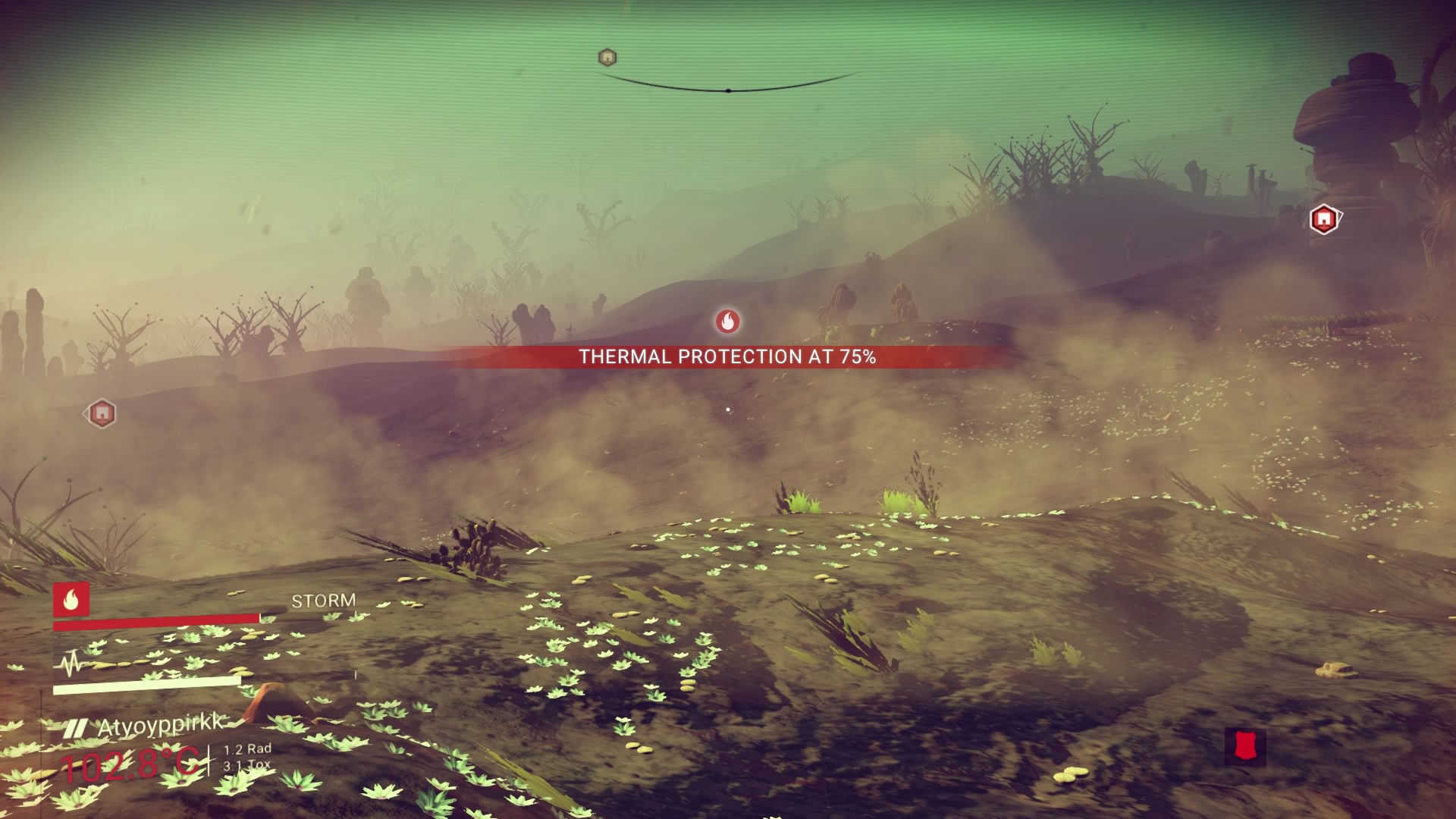
What happens if you die?
If you’re killed outside of your ship you’ll respawn back at your last save, probably in your ship. You’ll lose the items on your person but you can return to your body (marked as ‘your grave’ on your HUD) to retrieve them. If you’re shot to bits in space by pirates, you’ll return to the nearest space station and lose your ship’s cargo (though your components keep whatever charge they had). You can retrieve it by pointing your nose at the grave marker and flying to it with your pulse drive. I've never been attacked by pirates while retrieving my corpse, so don't feel too worried if you get blown up.
Do note that No Man's Sky autosaves on planets when you exit your ship, not when you enter. You can also save by activating outposts.
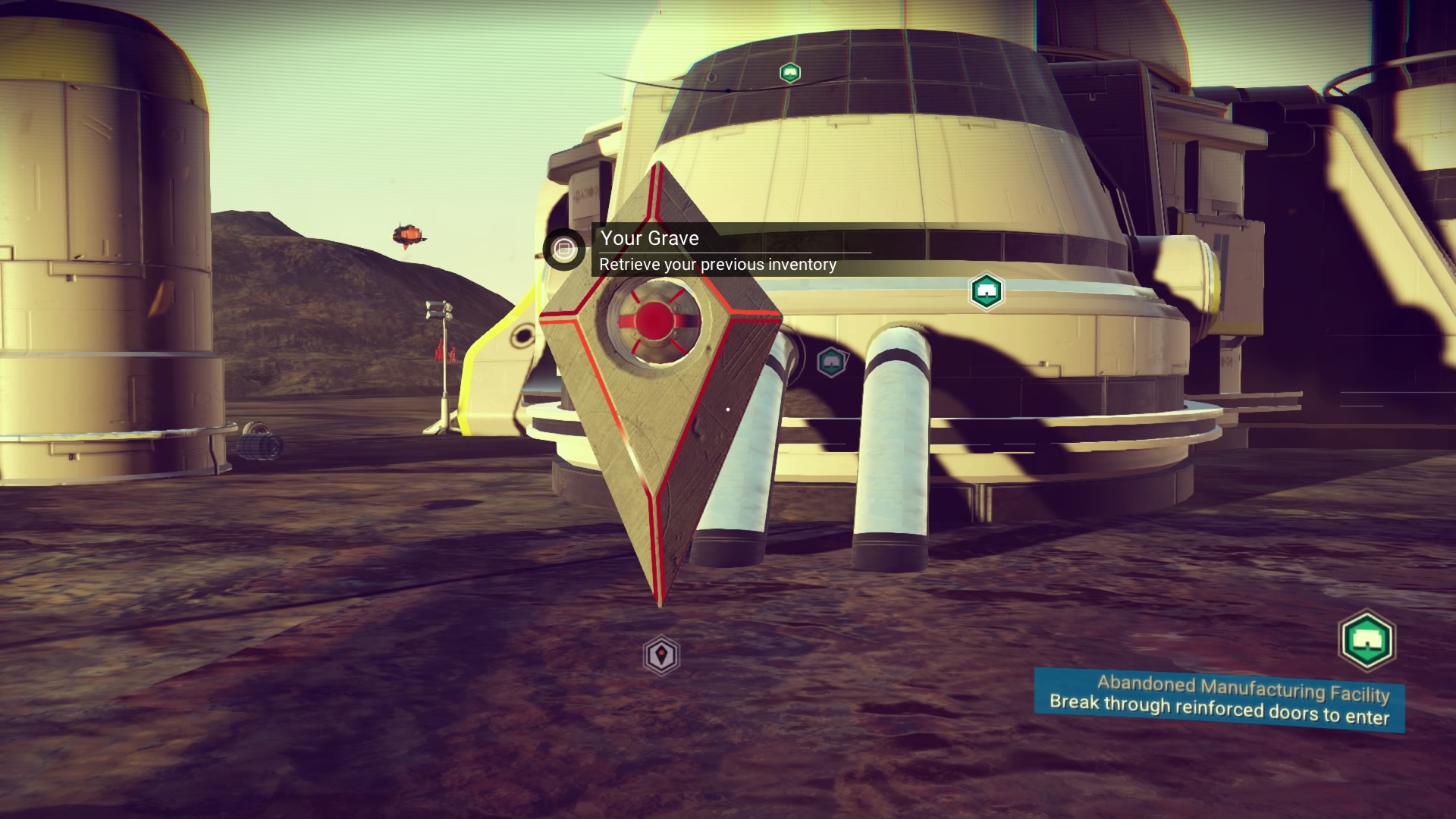
You don’t have to hoof it
If you put your reticule over a destination, it will tell you how long it’ll take to get there by walking. If it’s over a minute or two, just hop in your ship (once it’s fixed) and fly over. You don’t have to worry about radiation protection or life support while in your ship. Exploring planets in your ship can also help you find alien artifacts to land near—I just fly low over planets I visit looking for structures to land next to, hitting the ship's scanner now and then. You’ll use up plutonium every time you do it, but plutonium is plentiful.
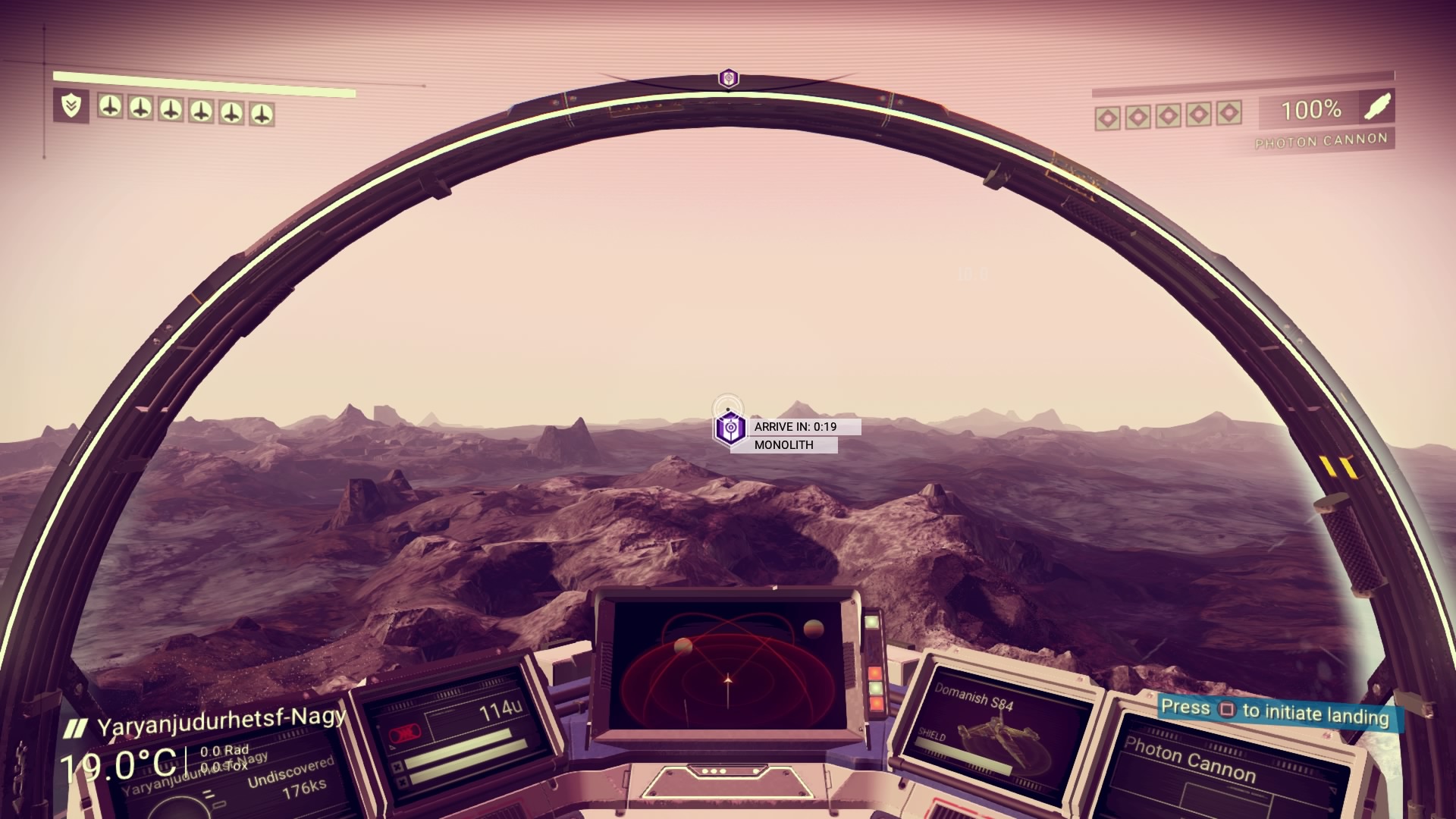
But if you do walk, do it with the jetpack
You can't use the jetpack to 'ski' like in Tribes (though wouldn't that be great?), but you can use it to make long walks a bit more fun. If you hit the melee key (default is Q) just before holding down on the jetpack (Space), you'll launch yourself with horizontal momentum rather than vertical. It can be tricky to get the hang of at first, but it helps speed things up a bit once you do. Just be sure to tap the jetpack again before you land so you don't take fall damage.
Getting to high places
If you leave your ship at the top of a plateau and can't get back up, know that you can jetpack infinitely as long as you're against a surface.
Run to the store often
Once you’ve left your starting system you should be able to find space stations at every subsequent system. At first, I was reluctant to leave planet surfaces, thinking I should gather up everything of value I could, discarding cheap resources along the way to make space in my inventory. Using your ship’s boost and pulse drive, though, you’re almost always less than a minute away from the space station, where you can sell all your stuff and possibly buy whatever it was you were looking for.
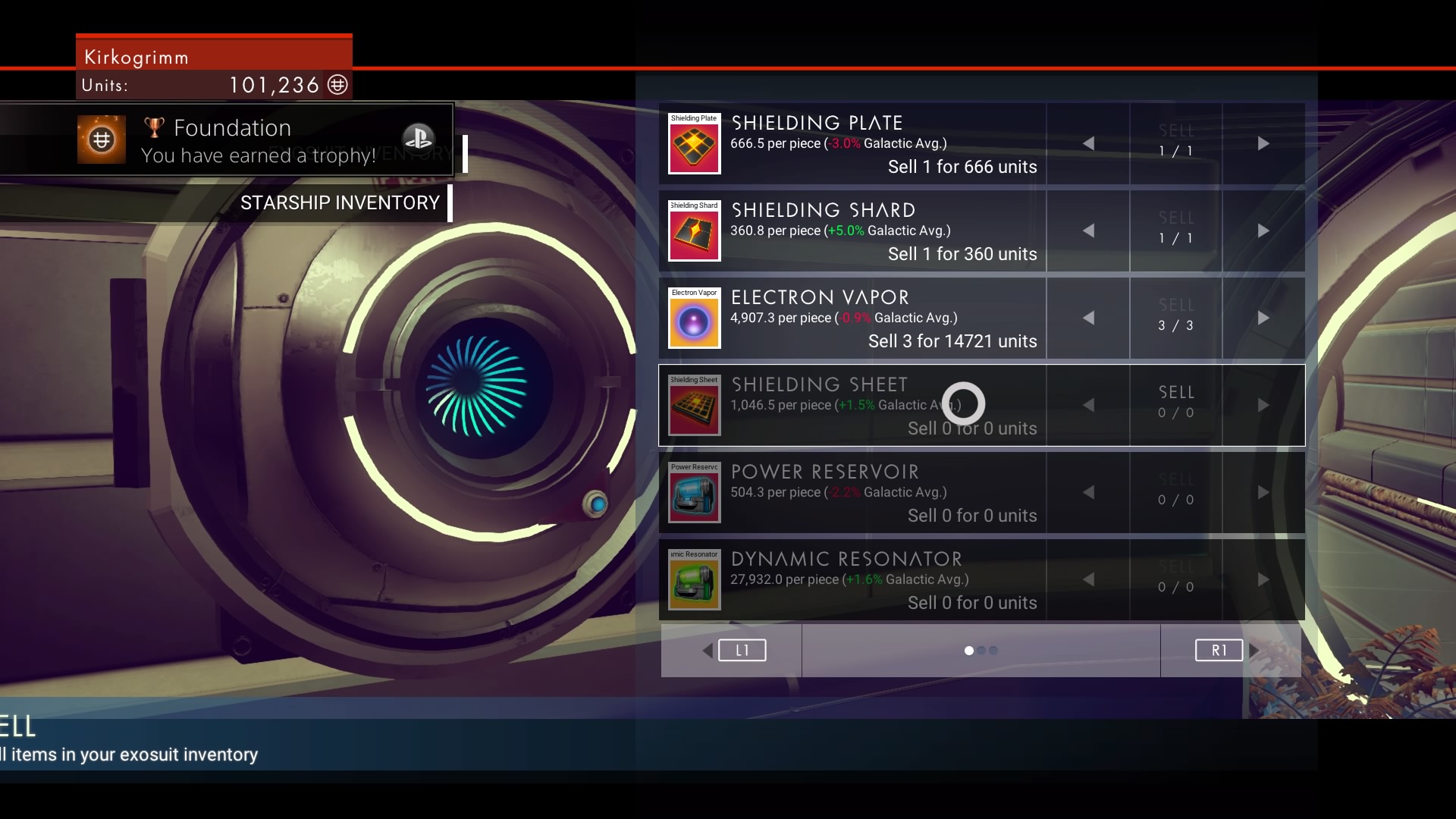
What to keep with you
On your ship, always keep a stack of plutonium, a stack of thamium9, and especially zinc or titanium to recharge your shields—you’ll see why after your first pirate attack.
On your person, keep plutonium or carbon to recharge your life support system and mining tool, as well as zinc or titanium to recharge your hazard protection system. Inventory management is a pain in the ass, but it can also help to keep an assortment of other elements and compounds—sometimes you can give them to aliens during dialogue. If you talk to an alien once and want to talk to them again, you'll have to give them a bit of carbon for some reason.
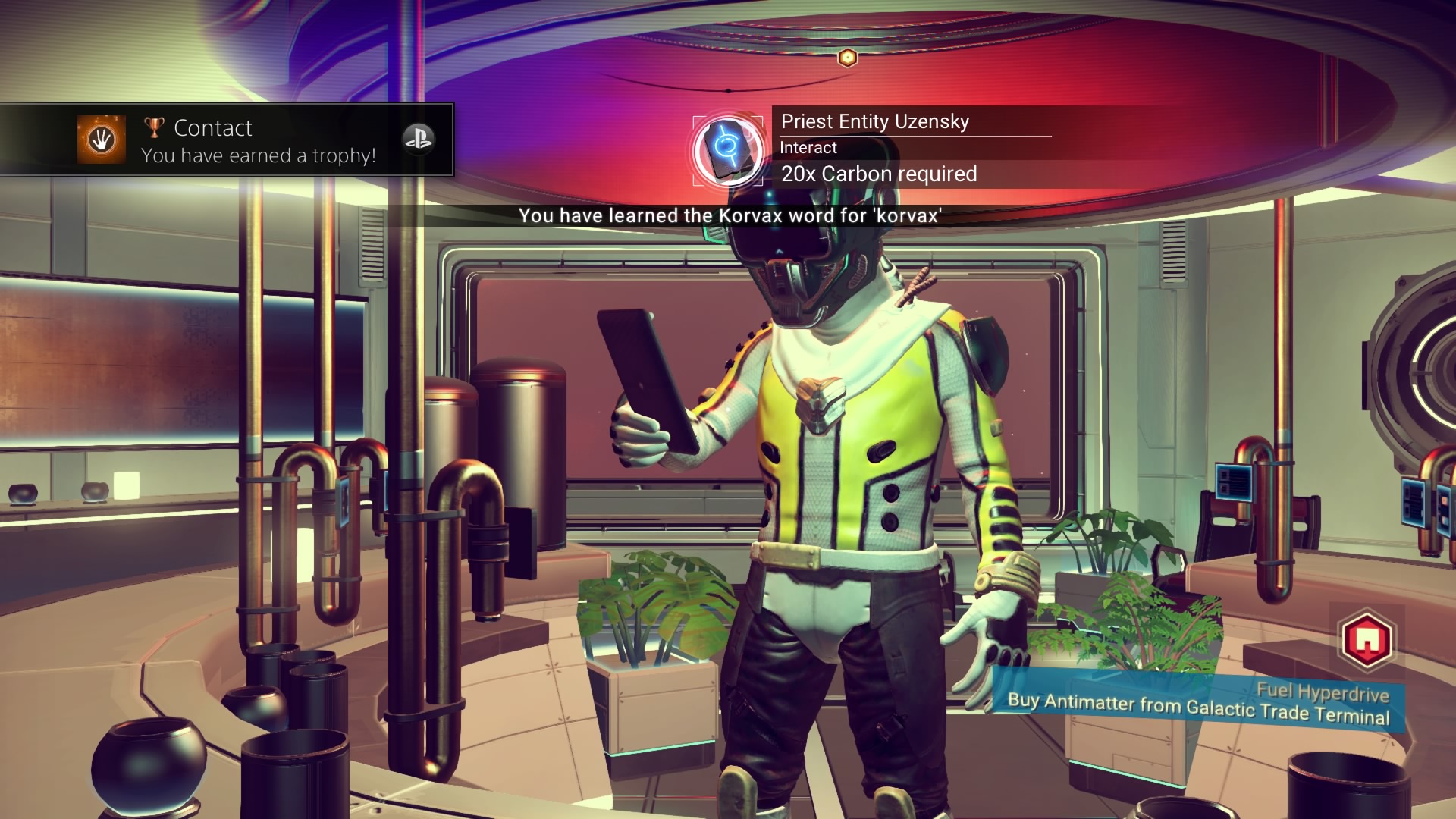
How to quickly upgrade your inventory
You’ll notice almost immediately that your inventory is extremely limited, and that you’re constantly going to be running out of room and having to make choices about what to take with you and what to sell. So, expanding the inventory of your suit and spaceship will become a top priority.
The easiest option is to buy new inventory slots for your suit in space stations. When you land, head to the locked door on the second floor, opposite the trading depot. You'll need an Atlas Pass to unlock the door, and inside you'll find an inventory slot vendor. Each time you buy a new suit slot, the price will increase by 10,000 spacebucks.

You can also find drop pods on the surface of a planet that sell inventory slots, but there’s no real guarantee of finding them regularly. Other than slowly cruising over the surface of a planet, scanning it, and investigating any question marks you see, your best bet is to find a beacon near an alien building—recognizable by an orange beam of light pointing upwards. You can activate a beacon by crafting a bypass chip, and you’re then given a choice of what to search for. One of the choices is to look for a shelter, and drop pods are sometimes found near shelters. Again, the price of each slot goes up 10K each time.
When it comes to adding slots to your spaceship, your only choice is to acquire an entirely new ship. You can interact with any landed ship in a space station or on a planetary outpost by simply walking up to it and activating it, then offering the alien pilot the amount he’s asking. Occasionally, crashed and abandoned ships can be found on a planet’s surface, and if it has more slots than your own ship to can have it for free—but the crashed ship will typically require a number of repairs first.
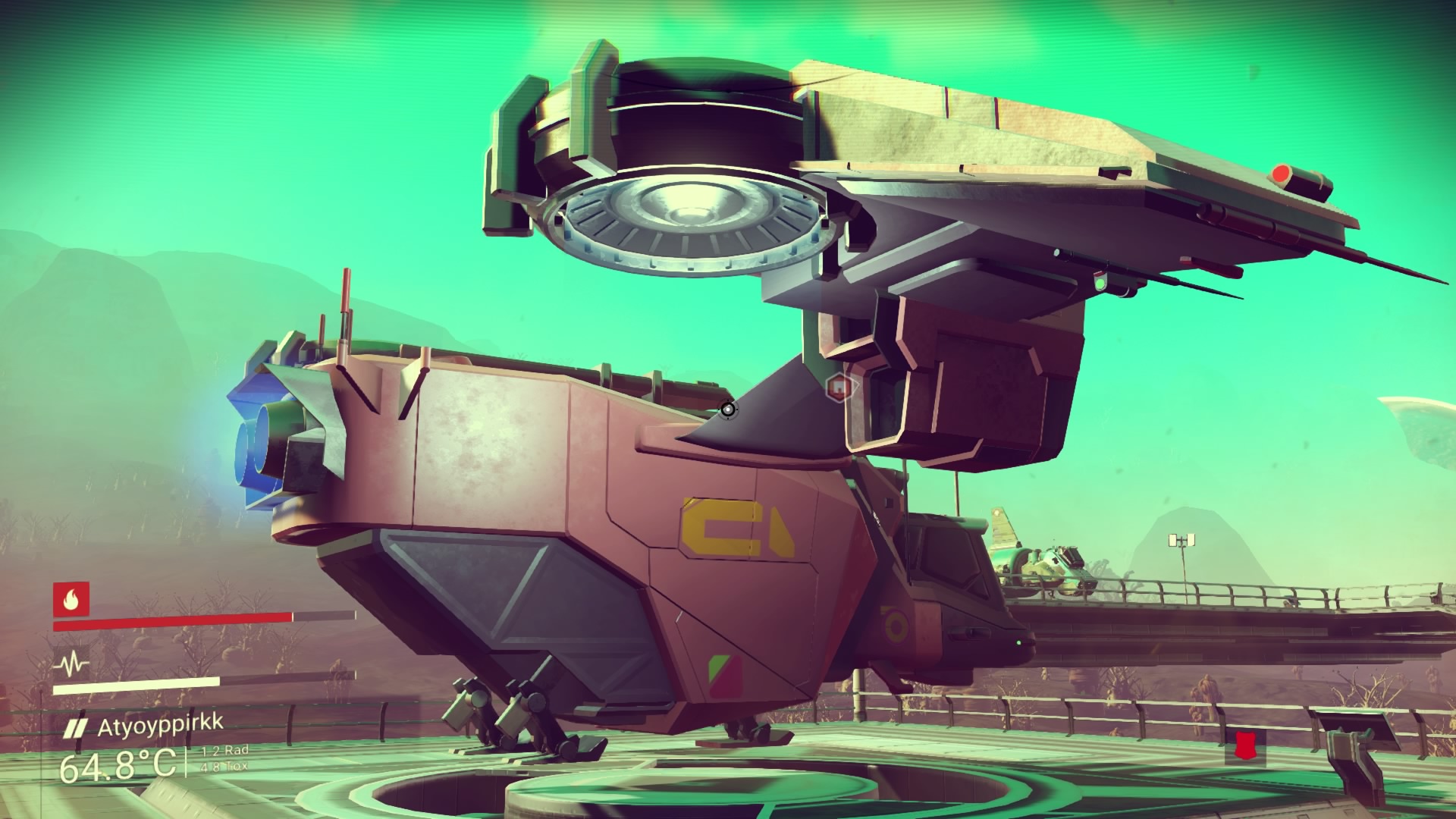
Inside buildings, check walls and tables
The planets you visit will be dotted with alien outposts and facilities. While speaking with any aliens you find inside is the primary goal, don’t forget to take a look around as well, at the walls and tables of the facility. Walls may have mounted specimens to examine, which boost your relations with alien factions. Tables may have items on them that can restore your shields, refill your health, or give you money. There are often also terminals that can provide you with new tech blueprints. So, don’t just race in and race out, take a moment to stop and look around.
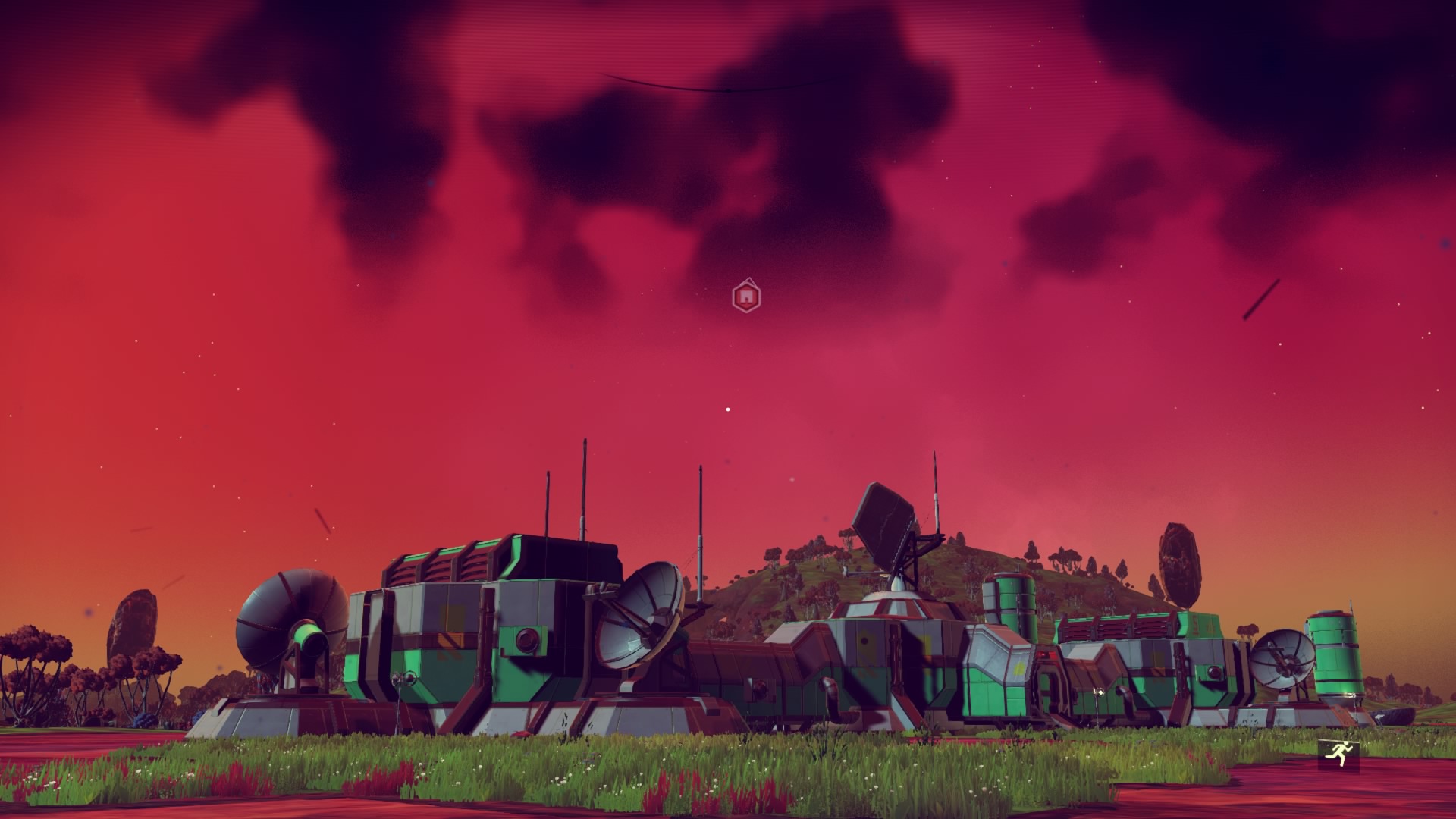
Feed animals
You don’t have to settle for simply scanning and naming (or killing) the alien creatures you find: if you get close enough to many of them, there’s an option to feed them. Some want to be fed carbon, others want iron, and still others may enjoy chowing down on a different resources. When fed, the animal may lead you to a useful or expensive element, so if you see a magnifying lens icon over their heads, follow them and see what you find.
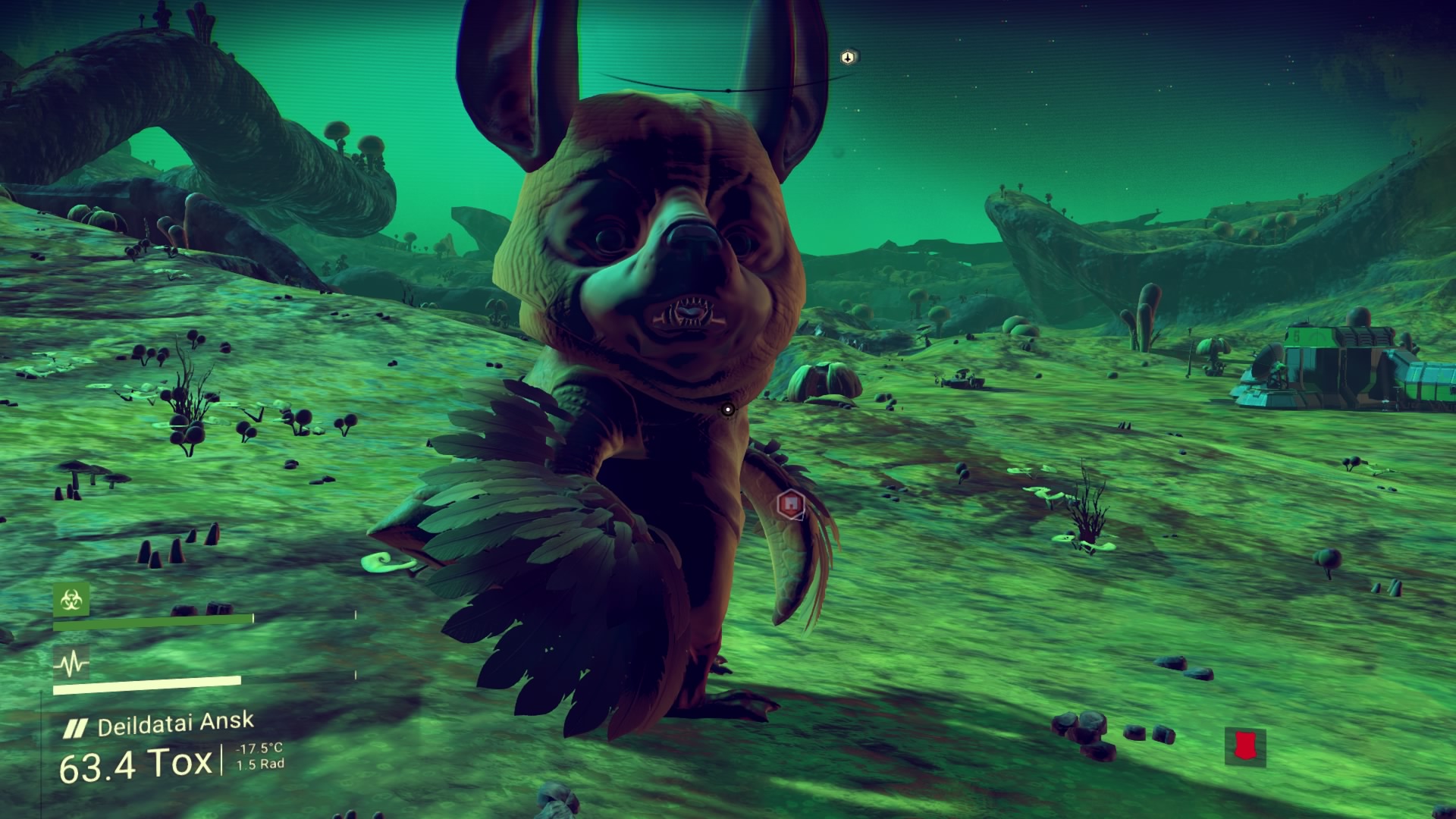
Graphics settings
No Man’s Sky defaults to a maximum of 30 fps. One of the first things you should do is increase it to 60, 90, 110, or ‘max’ in the graphics settings.

Alt-tabbing not working?
We like to alt-tab out of games to do other stuff, but No Man's Sky doesn't love us for it. It can be really tricky to get it to take focus again. Weirdly, we've found that, with it minimized, hitting 'Play' on Steam again will bring it back up rather than telling you it's already running.
You can also open up the task manager, expand 'No Man's Sky', right click on 'Application' and select 'switch to.'
Server status
Having trouble logging in, and unsure if it’s just you? Nomansskystat.us is an unofficial site that flags the status and load of No Man Sky’s PC and PS4 servers.

Tyler grew up in Silicon Valley during the '80s and '90s, playing games like Zork and Arkanoid on early PCs. He was later captivated by Myst, SimCity, Civilization, Command & Conquer, all the shooters they call "boomer shooters" now, and PS1 classic Bushido Blade (that's right: he had Bleem!). Tyler joined PC Gamer in 2011, and today he's focused on the site's news coverage. His hobbies include amateur boxing and adding to his 1,200-plus hours in Rocket League.

